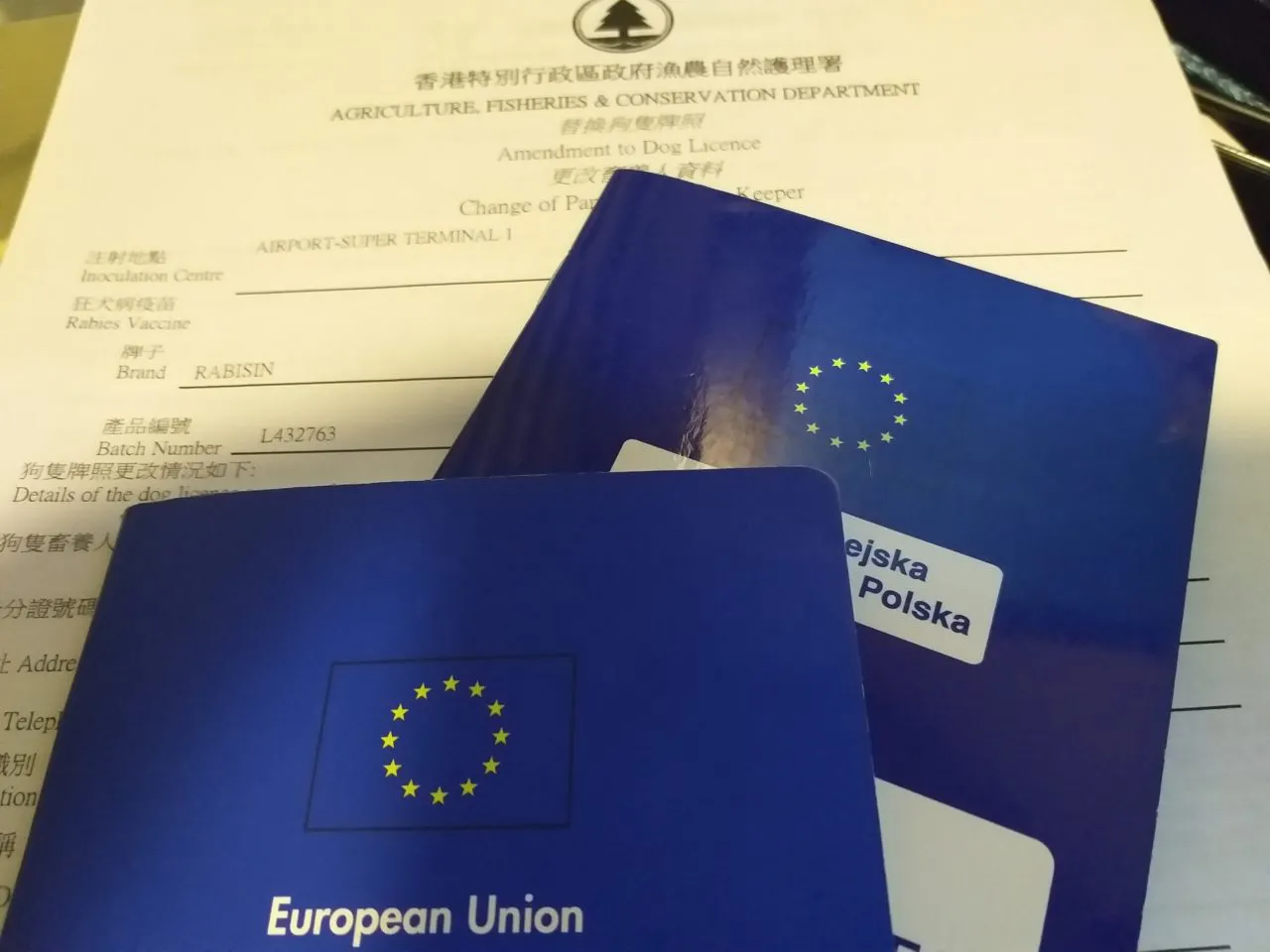Cat or Dog Passport for Relocation
A Pet Passport is a passport-format document that officially records information such as identity (name, ID number), health certificate, and vaccination status related to a specific pet.
The use of pet passports or other pet documents varies on a country-by-country basis. In Hong Kong, clinics don’t issue pet passports. The traditional situation in Hong Kong is, that most veterinary clinics place vaccination labels on a vaccine card. In some countries like the USA, veterinarians tend to print out one A4 page detailing what vaccines were done on that visit day, as a Vaccination Certificate.
Where Can My Pet Travel with a Pet Passport?
In Europe, Pet Passports are used for pet travel. This includes popular European countries like France, Spain, and Germany. Some non-EU countries like the UK, Norway, Switzerland, and Iceland allow your pet to travel with a pet passport. The European Union(EU) definition of a pet that can use a pet passport is a dog, a cat or a ferret. The role of the Pet Passport for international travel is together with the pets microchip (a tiny electronic device readable by a scanner and injected subcutaneously under the pet’s skin) and the pet’s physical appearance (sex, neutered or not, age, breed, colour) to act as a record and as one place where all these details are recorded. This passport is then able to be used like Humans’ passports, to enable ease of travel.
Why Is Pet Passport Important When Travelling to EU Countries?
A pet passport is essential for pet owners who want to travel to the European Union (EU) with their dog or cat. This document proves your pet meets health and vaccination standards and is approved for travel. A pet passport is essential for pet owners who want to travel to the European Union (EU) with their dog or cat. This document proves your pet meets health and vaccination standards and is approved for travel. Most restrictions on pet travel are to stop the spread of diseases in EU countries. These can be viruses like Rabies, which is contagious, and can also affect people (ie Zoonosis) and cause thousands of human deaths annually in poorer countries like Rural India.
But also it’s to stop the less famous but equally devastating diseases like Brucellosis, which can affect pets and livestock.
A Pet Passport is a certificate booklet which is a way to try to enable ease of communication and movement of pets. Don’t worry if your country does not use the dog or cat passport, other forms of Veterinary Documentation are acceptable, and exact requirements vary with each country.
Can My Dog and Cat Avoid Quarantine If They Have a Pet Passport?
A pet passport can help you avoid putting your dog or cat into quarantine when entering certain countries, but the rules are different for all countries. In the EU (European Union), pets can travel freely between member countries without quarantine if they have a valid EU Pet Passport. The pet passport shows they are microchipped, vaccinated against rabies, and have a veterinary health check.
However, quarantine is still required while relocating pets to Australia and New Zealand, even with a passport. So, planning in advance and following each country’s pet import regulations is essential.
What Details Are Included in a Pet Passport?
A pet passport contains all the necessary information to properly identify your pet and prove they have met travel requirements. The cat or dog passports list the treatments (like vaccinations) your pet has had, details the date and brand, and are signed and stamped by a licenced veterinarian. Here are some key details typically included in the pet passport:• Details of Ownership
• Description of Animal
• Marking or Identification of Animal
• Vaccination records
• Picture of your pet
• Documentation of Parasite Control
• Travel Dates and Destinations
How to Apply for a Cat and Dog Passport?
A pet passport allows your cat and dog to travel internationally with you while following all the necessary regulations. Here are the necessary steps to apply for a pet passport for your dog or cat:
Visit your veterinarian – Schedule a visit to an authorised EU veterinarian. The vet will carry out your pet’s health check and microchip it if it still needs to be done.
Get the passport application – You can usually get the passport application from a government website. Fill out your personal information and your pet’s details on the application form. Make sure all required vaccination and microchip information is included.
Submit photos of your pet – Most applications require current pictures of your pet to be submitted along with the form. Follow any photo guidelines, such as size and background colour.
Wait for processing – It takes several weeks, sometimes longer, to process pet passport applications. Only make travel plans once you have the approved passport in hand.
Conclusion
Having a correctly filled-in Pet Passport (or in Hong Kong, correctly filled-in Pet Vaccination Cards and Dog Licence forms) allows pet relocation agents and Governments to drastically speed up and simplify travel with and transport of animals between countries, if all the other regulations are followed correctly. As a pet relocation company, we are here to guide you, from advising on mandatory treatments to all the processes of obtaining a pet passport. Don’t let paperwork delay your travel. With the right preparation, your pets can become world travellers, too.
Click Here For Shipping Enquiry
Frequently Asked Questions
What is a pet passport?
A pet passport is a document that allows you to travel with your pet between certain countries without having your pet undergo quarantine.
Do dogs need a passport for Australia?
No, a pet passport is not compulsory in Australia. But your pets require an import permit and health certification to enter Australia. Also, your pets need to go to the quarantine facility.
What animals can get a pet passport?
Pet passports are available for dogs, cats and ferrets.
What documents are included in a pet passport?
A pet passport typically includes your pet's identification information, microchip details, rabies vaccination records, and any other relevant health certificates.



